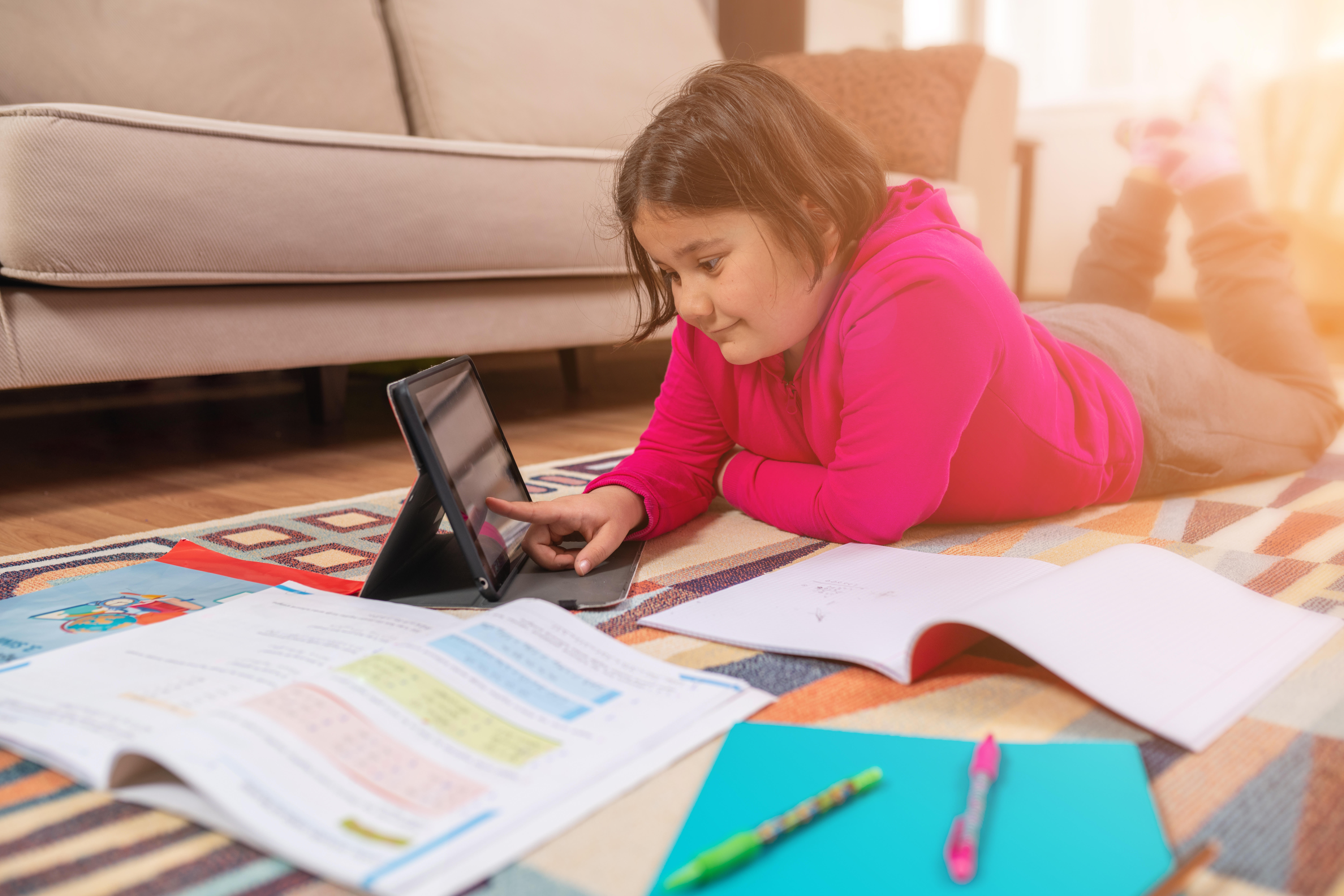John Vogel | Published April 28, 2022
The world can be an unpredictable place. We’ve all experienced that recently. And one of the hardest adjustments many of us have had to make in the past few years was a shift, even temporarily, to remote learning.
For those who were teaching remotely, the quick flip to instructing from home posed its own set of technical and curriculum-based challenges. For those suddenly learning remotely, the challenges were quite different.
There’s no way to know if remote learning will now become a norm for those seeking an alternative to a classroom, or something that just happens from time to time. But we can be prepared by tracking best practices. Here are six hard-won insights from teachers who taught remotely during the pandemic.

Having to shift from the classroom to remote learning is hard because you can’t move everything you do in class directly into the virtual world. Students and teachers alike need materials that are easy to access and work well when you’re not in person. The bottom line? Keep it simple.
The simplicity isn’t about what students are learning, but how they access the work. For example, an assignment with a 10-step click-through process is not simple. However, if your assignment has students complete work on their own paper, snap a picture, and post it to your virtual classroom, you’ve held onto the academics without causing additional, technological confusion.
You can also keep it simple by reviewing online resources before assigning them. You may find multiple products that claim to do the same thing. The one that does so with the strongest user interface, that’s the most user-friendly on both sides, should be your winner.
There are so many different ways for students to learn. In the classroom, you can see students as they have those “aha moments,” when they find a medium that really makes what they’re learning clear. This visual cue gets lost when learning remotely, since most students do their work with the screen off.
To work around this loss of visibility, assign options for students to demonstrate comprehension. Instead of only assigning chapter quizzes full of short answer questions, allow students to prove they “get it” in other ways. Ask students to retell what a chapter is about in their own words using images, PowerPoint slides, a video, or even an outline of key points.
Getting the flexibility to display their own knowledge in the way that makes the most sense to them gives you what you want, proof of comprehension, and returns some control to the student.
Another challenge with remote learning is gaining your fair share of students’ bandwidth for learning. The format doesn’t lend itself to tackling one assignment at a time: rather, students get all their instructions and assignments up front, so they can work independently. It’s overwhelming for them and it’s easy for them to forget important details, even if everything is written down.
To address this, provide an outline to students that anyone could follow. If a parent picks it up to check in, the information should be concise, while fully explanatory, to accommodate the remote/independent setting. Instead of offering a mountain of text, insert infographics, hyperlinks, or anything else that’s relevant and breaks up the text.
Deliver all instructions very clearly, and reinforce what you’ve written whenever you’re “with” your students. For students who aren’t visual learners, hearing the assignment gives them a higher degree of comprehension than if they simply read through the assignment on paper or on screen.
In a remote format, it’s much harder to concentrate. It’s even hard to get an entire class to log in and keep their screens on. With all of that working against you, make sure that any class time you have is valuable.
Even though it’s always a best practice to introduce new information slowly to students, remember that remote learning is a better format for review. Rather than worrying about what new concepts students must learn, make sure they’re not forgetting what they already know. Spend ample time reinforcing existing concepts, connect new and old information together, and take it slow with the new stuff.
Examples are a great way to hit all three of these points, especially if you can pull in details relevant to today. Talking about what’s happening now, and how it connects to whatever students are learning, can make the concepts more memorable, so when it’s time to bring in those new lessons, there’s a clear pathway from A to B.
Even classroom learning doesn't always contain the level of interactivity educators want to have. Sometimes you simply have to lecture, or students need to read, and that’s fine. Still, with remote learning it can’t be all you do.
There are too many distractions pulling students away, and it’s just hard to sit and stare at a computer screen for a long period of time. There’s also screen fatigue to combat. So, the trick is to let them take their eyes off the screen without losing them completely.
For older students, interrupting bits of instruction with an interactive activity, even if it’s just 3-5 minutes, can help. Toss in a quiz to ensure people were listening. Have the students grab a whiteboard and marker and answer some easy questions, solve some quick problems, or even draw a picture of what they just learned.
For younger students, the whiteboard can work too, but even better is engaging them in a brain break. This type of activity also only lasts a few minutes, but forces them to stand up in front of their computer and move their body around. Getting that adrenaline flowing wakes them up so they can refocus later on.
Although it may be easier to assign work and let students complete it independently, they’re losing something without time together, and you are too. Even though remote learning is hard, ensuring that the entire class is still connecting is vital.
Setting and communicating a clear schedule of both synchronous and asynchronous learning blocks allows students to see the big picture. They won’t need to stress about work during class time because they know they have time to get things done on their own later. They can be more present when screens are on because that’s the time you’ve earmarked for everyone to be together.
Although it’s harder to plan lessons for synchronous sessions, it’s probably the most important best practice to implement when remote learning is the norm. It ensures you know your class, and you see, from the looks on their faces, how they’re doing with the material you’re teaching.
This is not a big secret. Remote learning happens in an infinite number of ways, with different types of schedules, curriculum, and learning aids. Screen time, workload, grading structures, and more all vary. The one constant is that it’s rough.
As an educator, you most likely found a few strategies that worked best for you the last time remote learning was the norm. This list of best practices can help strengthen what you’ve already figured out and hopefully make for a seamless transition into the virtual space if you’re ever sent there again.

At the start of the school year, teachers have the chance to create a math classroom where every student feels valued...

Math manipulatives are a great way to make math more accessible for your students, especially if you know they may...

Storytelling is one of the oldest forms of communication as a way to share experiences, understand others, and...